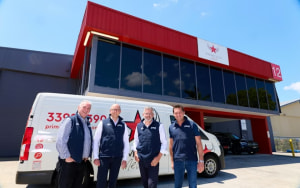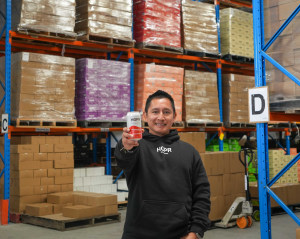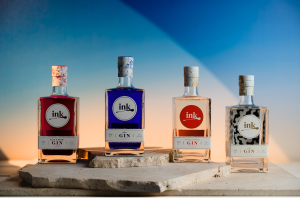Australia’s national science agency, CSIRO, unveiled the latest innovations in recycling for National Science Week to inspire the next generation of leaders who will lead the country’s circular economy-focused future.
Students from year 6 at Marrickville Public School have joined CSIRO chief executive Dr Larry Marshall, and researchers from CSIRO and the University of Technology Sydney, to test a new prototype ‘Smart Bin’ and interact with construction materials made from recycled glass and polystyrene.
Smart Bin Technology uses IoT, sensing, robotics, AI and infra-red spectroscopy technologies to automatically sort plastic, metal and glass, as well as sorting specific types of plastic.
The bin is a proof-of-concept device designed to improve recycling rates, reduce contamination in waste streams. It also supports turning waste into a resource.
Victorian small business Casadico create commercial construction materials from recycled glass, newspaper and polystyrene, much of which is sourced through online waste exchange marketplace Aspire, which spun out of CSIRO in 2013.
Marshall said innovation and collaboration were essential to developing Australia’s circular economy, and are at the heart of CSIRO’s collaborative Ending Plastic Waste Mission, which has a goal of an 80 per cent reduction in plastic waste entering the Australian environment by 2030.

“Solutions from science that will grow our circular economy take collaboration at every stage of the innovation process – from understanding plastics at a molecular level to reinvent the way plastic is used, made and recycled, through to commercialising solutions that use new technologies,” he said.
“Science can transform our economy into a circular one that renews and reuses what we previously discarded, creates higher paid jobs, advances new Australian technology, and protects our environment, while inspiring the next generation with what’s possible – during National Science Week and throughout the year.”
Wei Ni, principal research scientist at CSIRO, added that Smart Bin Technology could be used at venues like shopping centres, schools, cinemas, coffee shops and airports.
“It can simplify the recycling process and improve efficiency for waste classification and sorting. The Smart Bin will help promote the circular economy and contribute to a carbon neutral future,” Ni continued.
“Working with CSIRO, we have developed the latest IoT and AI technologies to build this amazing Smart Bin,” added Professor Ren Ping, researcher at the UTS.
“It can simplify the recycling process and improve efficiency for waste and sorting, The Smart Bin will help to promote the circular economy and contribute to a carbon neutral future.”
According to Samantha Mucci, Casafico’s head of communications, sourcing waste materials through Aspire helps us to become carbon positive, to save scarce natural resources and divert waste away from landfill.
“We can’t underestimate how small changes can make a huge difference. It’s great to see the next generation are learning that,” Mucci exclaimed.
In line with the 2022 National Science Week theme ‘Glass: more than meets the eye’, CSIRO has developed curriculum-aligned lesson plans with suggested class activities around the glass, plastic and the circular economy theme made available to support teachers nationwide.
This continues CSIRO’s 40-year track record of actively supporting STEM (Science, Technology, Engineering and Mathematics) learning for students and teachers with high-quality education programs.







